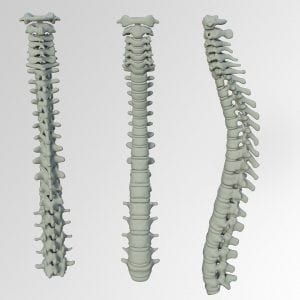Chordoma
What is chordoma?
A chordoma is a form of malignant tumor that can form anywhere on the spine. They are typically slow growing but spread into the surrounding bones and tissue.
Adults between the age of 40 and 70 are most commonly affected, and males are at a higher risk than females. They are a very rare tumor; one of every million people are diagnosed.
What are the symptoms of chordoma?
The symptoms of chordoma may vary depending on where the tumor occurs on the spinal cord. A third of chordomas fall on the base of the spine, a third are on the base of the skull, and the rest fall in between.
Common symptoms include pain, weakness, and numbness in the back and extremities. If the tumor falls on the base of the skull, people may experience double vision and headaches. Tumors at the base of the spine lead to a lump that can be felt through the skin and cause bladder and bowel problems.
What causes chordoma?
Mutations in the TBXT lead to chordoma. This gene is responsible for the production of the brachyury protein, which is needed for embryonic development. It plays a role in the early creation of the spine. Medical professionals know that these mutations cause an excess of this protein, but they are unsure of why this excess leads to the formation of tumors.
This mutation is inherited in an autosomal dominant pattern.
How is chordoma diagnosed?
A biopsy is the main test used to diagnose this cancer. In order to assess spread doctors will perform imaging tests, like MRIs and CT scans.
What are the treatments for chordoma?
Treatment options depend on the size, location, and spread of the tumor. Doctors may recommend surgery, chemotherapy, radiation, radiosurgery, or targeted therapy.
Where can I find out more about chordoma?
Chordoma Articles

Study of the Week: Scientists Develop Chordoma Organoids to Facilitate Drug Research



Part One of Chordoma Drug’s Phase 2 Trial is Ready to Begin




